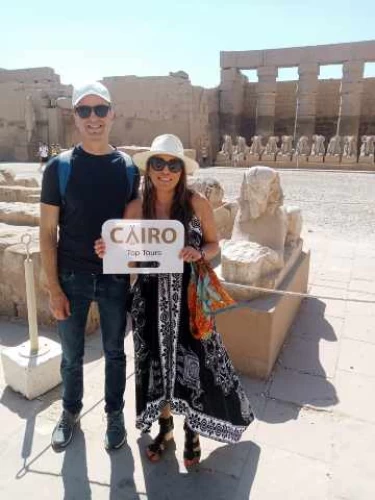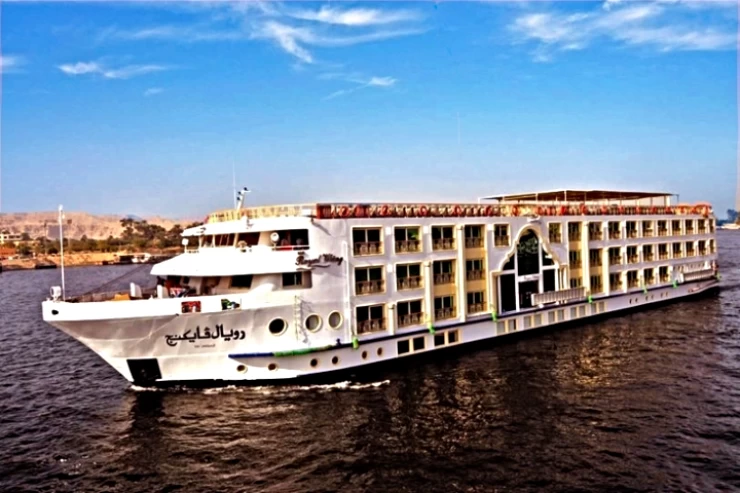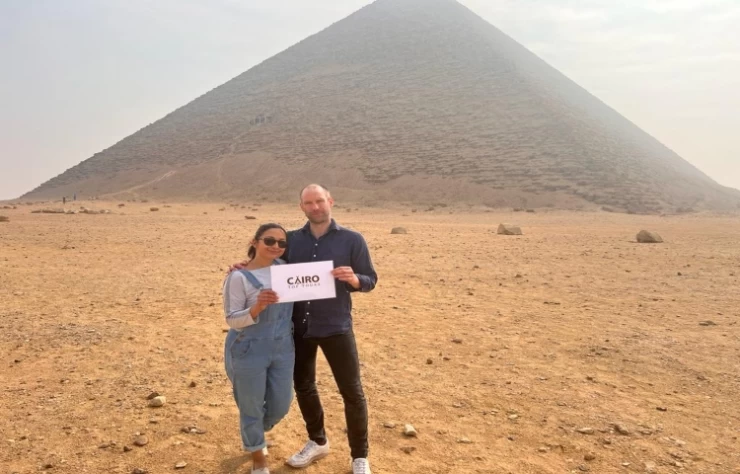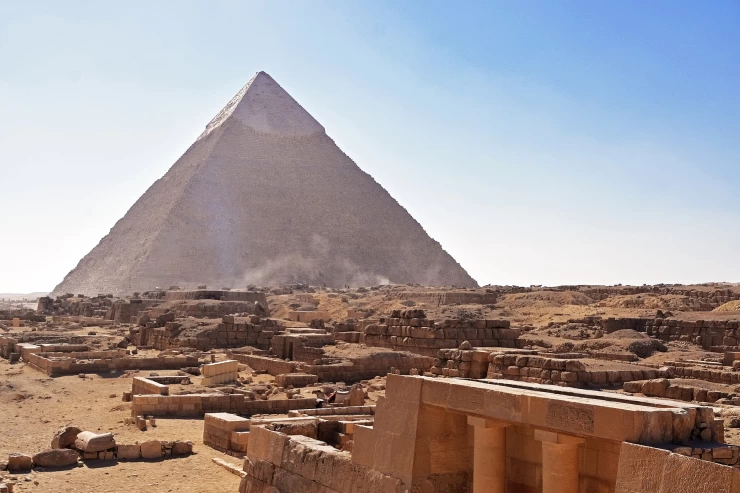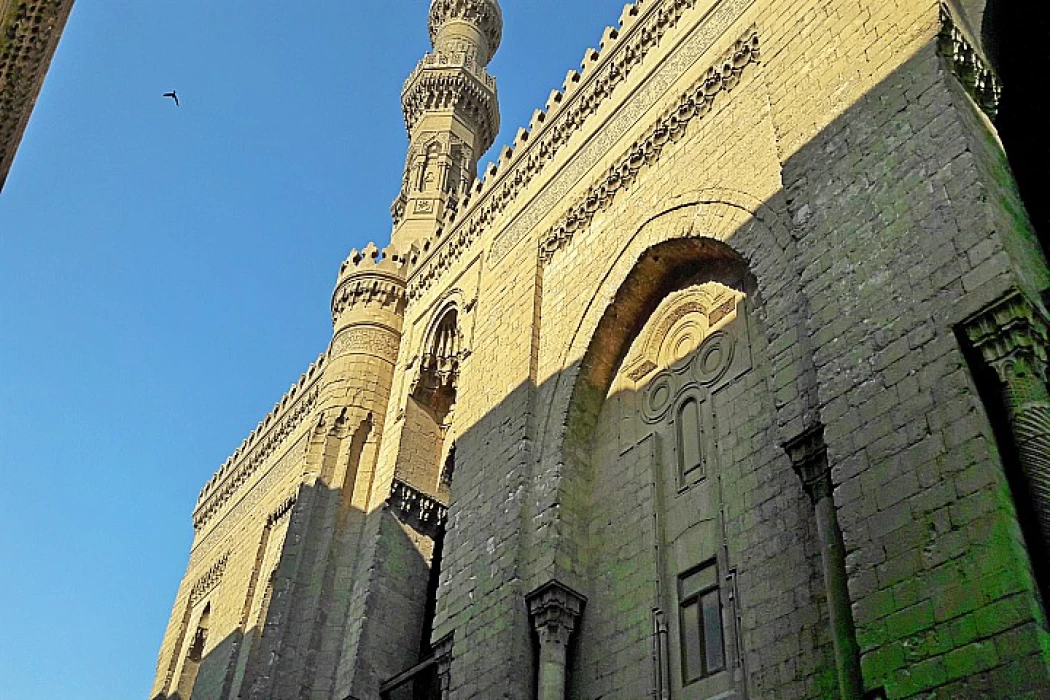
Mesquita Al Rifai
Mesquita Al Rifa'i
Foi construído em dois períodos diferentes, entre 1869 e 1912, por isso é caracterizado por estilos artísticos e arquitectónicos diferentes.
Ao seu lado encontra-se a muito mais conhecida Mesquita do Sultão Hassan, datada do século XIV, que se manteve intacta apesar dos conturbados séculos de história.
Cairo Islâmico
A dimensão colossal da mesquita é mais marcante. É considerada como uma das principais coisas a fazer no Cairo e está localizada em Midan El Qala'a, mesmo por baixo da Cidadela de Salah El -Din, na parte mais central do Cairo islâmico. Pode chegar à Mesquita de Al Rifa'i através de uma entrada mútua partilhada pelas duas mesquitas esta e a mesquita do Sultão Hassan.
Muitas pessoas famosas estão enterradas aqui na Mesquita de Al Rifai, muitas delas pertencem à família de Mohammed Ali - como Kushyar Hanim, que ordenou a sua construção em 1869, e o seu filho, o famoso Khedive Ismail, que remodelou o Cairo e a maior parte do Egipto, bem como o Sudão, que fazia parte do reino egípcio. A mesquita acolheu também o corpo falecido de Mohammed Reza Pahlavi Shah Pahlavi, conhecido por ser o último Xá do Irão antes da Revolução Islâmica, que trouxe o domínio Khomeini. Na mesma sala de enterro encontra-se o filho do Xá, Mohamed Reza Pahlavi, que morreu em 1980, quando se encontrava exilado no Cairo. Outra figura notável enterrada aqui foi Yehya Al Ansari, um guia do Profeta Maomé (que a paz esteja com ele) e o santo local Ali Abu-Shubbak. Embora não esteja tecnicamente enterrado na mesquita, o Xeque Ali Al Rifai, que foi uma figura principal no Cairo islâmico durante os tempos medievais, tem um santuário onde muitos habitantes locais vêm até hoje para rezar e receber algumas das suas bênçãos. Antes da reconstrução maciça, a Mesquita Al Rifai estava localizada no local de uma pequena mesquita chamada Rifai Zawiya e acredita-se que tenha trazido muitos dos seguidores e estudantes do renomado erudito, pode-se visitar a mesquita durante qualquer uma das excursões regulares do Dia do Cairo
Talvez opte por caminhar até à mesquita a partir do castelo da Rua Salah El-Din, e há uma vista interessante das antigas casas egípcias à espera de apreciação. Pode também aproximar-se da mesquita através da Rua Sayeda Aisha, que também o conduzirá ao portão principal. É um portão duplo partilhado tanto por Al-Rifai como pelo Sultão Hassan, terá de o passar pelo scanner ou detector de segurança. As duas mesquitas estão separadas por uma rua pedonal relativamente estreita, e a estrutura maciça da Mesquita Al-Rifai não deveria ser surpreendente se o seu tamanho e capacidade para competir com a vizinha Mesquita do Sultão Hassan, tivesse sido da maior importância.
Quando se caminha brevemente em direcção à entrada da mesquita Al Rifai, uma escadaria alta leva-o a um enorme portal. Como uma espécie de respeito e para evitar confusões, os visitantes da mesquita devem estar prontos a tirar os sapatos antes de entrarem, e as senhoras são gentilmente solicitadas a usar roupas não reveladoras e podem trazer consigo um lenço de cabeça.
A mesquita tem uma grande semelhança em muitas das estruturas modernas. Uma vez dentro, só se pode notar o belo tecto. O ouro foi especialmente importado da Turquia para dourar. Os visitantes devem sentir-se à vontade para vaguear pelo interior desta maravilha arquitectónica. Sugerimos que visite os locais de sepultamento de Khedive Ismail e Reza Shah Pahlavi.
Uma vez terminada a visualização destes padrões islâmicos, sinta-se à vontade para passar as mãos pelo santuário de Al Rifai marcado por luzes verdes na sala, mesmo no meio da mesquita. Pode até ler as suas orações ou fazer um desejo que será certamente satisfeito! Se visitar a mesquita numa sexta-feira de manhã, a maior parte do tempo será tranquila e vazia.
A visita à Mesquita Al Rifai irá familiarizá-lo com a era da monarquia egípcia, outrora de longa duração, e com a sua rica origem islâmica. Ao ver os túmulos do rei Farouk, o último rei do Egipto, e Mohammed Reza Shah Pahlavi, o último Xá do Irão, ajuda a formar uma melhor compreensão tanto das conclusões iranianas como egípcias para as suas monarquias. Talvez nestes tempos, o melhor seja olhar para trás; analisar e aprender os líderes do passado para ter um pequeno vislumbre do futuro possível.
Visite o Cairo islâmico e lugares muito mais interessantes durante os nossos pacotes de viagem no Egipto, como por exemplo:
Você pode fazer muitas coisas Durante o feriado da Páscoa, você pode ir a um lugar especial chamado Egito, onde pode aprender sobre a incrível religião chamada Islã.
It was inbuilt in 2 totally different periods, that is between 1869 and 1912, thus it's characterized by totally different inventive and subject designs. Next to that stands the far better well-known ruler Sultan Hassan Mosque, chemical analysis back to the ordinal century, that has remained intact despite the troubled centuries of history.

The prodigious size of the house of worship is most hanging. it's counted jointly of the main things to do in Cairo and is located in Midan El Qala’a, right below the Citadel of Salah El -Din in the foremost central part of Islamic Cairo. you'll be able to reach the house of worship of Al Rifa’i through a mutual entrance shared by the 2 mosques this one and therefore the mosque of Sultan Hassan.

Many renowned folks are buried here in Al Rifai house of worship, tons of them belong to soldier family-like Kushyar Hanim ordered its construction in 1869, and her son the renowned Khedive Ismail, United Nations agency refurbished Cairo and most of Egypt likewise as Sudan that wont to be a part of the Egyptian kingdom. The house of worship hosted the deceased body of Muhammad Reza Pahlavi crowned head Pahlavi, known for being the ultimate of Iran before the Moslem Revolution, that caused the Ruholla Khomeini rule.
within the same burial space lies the Shah’s son, Mohamed Reza Pahlavi died in 1980 whereas in exile in Cairo. Another notable figure buried here was Yehya Al Ansari, a guide of the Prophet Mohamed ( peace be upon him) and native saint Ali Abu-Shubbak. though not technically buried within the house of worship Arab chief Ali Al Rifai, the United Nations agency was a number one figure in Islamic Cairo throughout medieval times, including a shrine wherever several locals return till at the present time to hope and receive a number of his blessings.
Before the large reconstruction, Al Rifai house of worship was situated at the positioning of a little house of worship named Rifai Zawiya and was believed to create several of the known scholar followers and students, you'll be able to visit the house of worship throughout any of the regular Cairo Day Tours
Perhaps you may value more highly walking to the house of worship from the castle of salaah El-Din Street, and there's a motivating read of the traditional Egyptian homes awaiting appreciation. you'll be able to conjointly get near to the house of worship via Sayeda Aisha Street, which is able to conjointly lead you to the most gate. it's a double gate shared by each Al-Rifai and ruler Hassan, you may pass it through the protection scanner or detector. the 2 mosques are separated by a comparatively slender pedestrian street, and therefore the huge structure of the Al-Rifai house of worship mustn't be stunning if its size and talent to contend with the neighboring ruler Hassan house of worship, had been of utmost importance.
When you walk shortly towards the entrance of the Al Rifai house of worship, a high step takes you to a large portal. As a sort of respect and to avoid confusion, guests to the house of worship should be able to take away their shoes before they enter, and therefore the girls are kindly requested to wear incommunicative garments and that they will bring on a headband.
The house of worship includes a nice similarity to several of the fashionable structures. Once within, one will solely notice the attractive ceiling. Gold was especially foreign from Turkey for coating. guests ought to be happy to wander around within this subject marvel. we advise you to visit the burial places of Khedive Ismail and Reza crowned head Pahlavi.
Once you're finished viewing of these Islamic patterns, be happy to run your hands across the shrine of Al Rifai marked by inexperienced lights within the space right within the middle of the house of worship. you'll be able to even scan your prayers or create a would like that may be certainly fulfilled! If you're visiting the mosque on a Friday morning it'll be most of the time quiet and empty.







